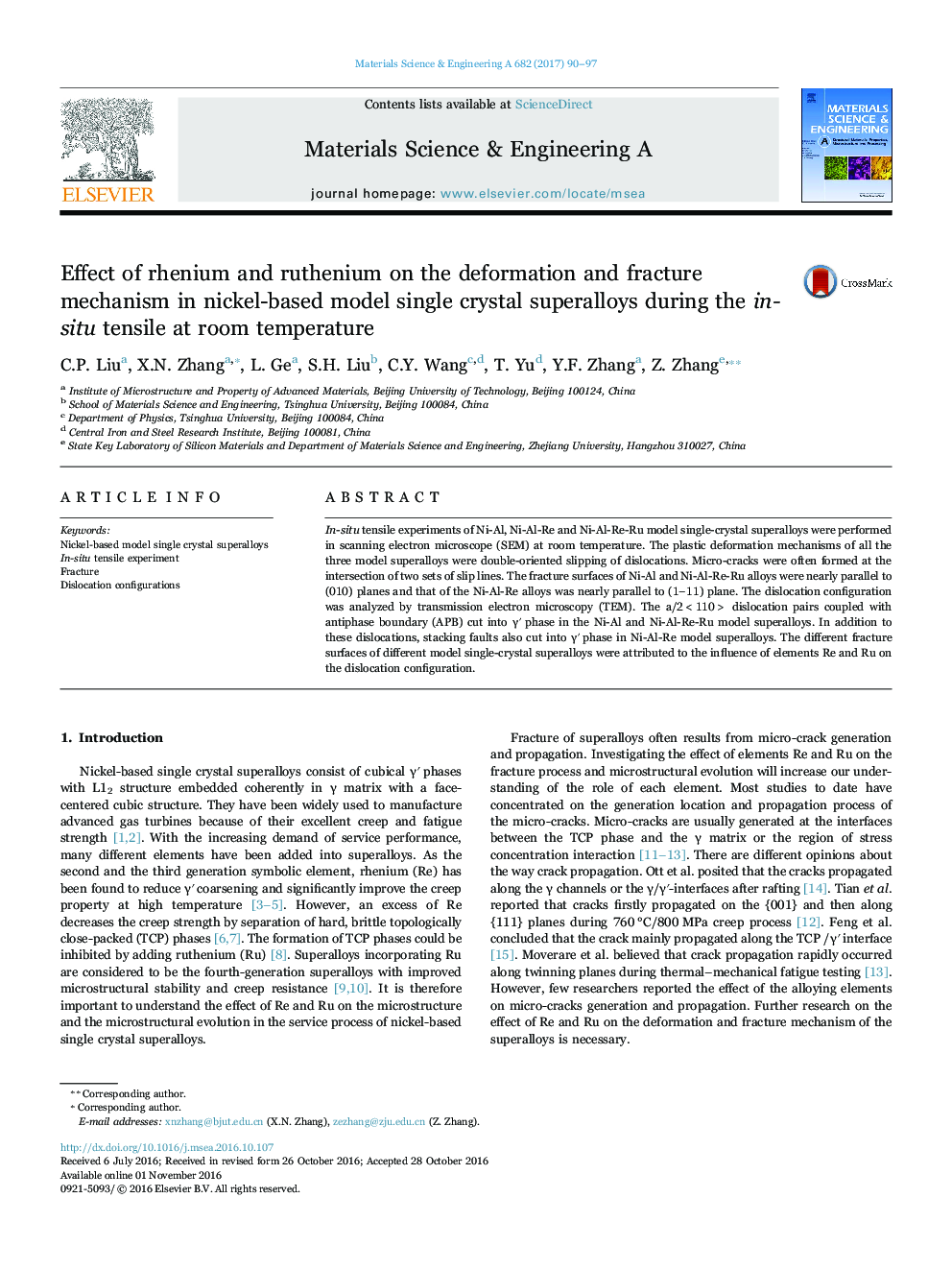| Article ID | Journal | Published Year | Pages | File Type |
|---|---|---|---|---|
| 5456382 | Materials Science and Engineering: A | 2017 | 8 Pages |
Abstract
In-situ tensile experiments of Ni-Al, Ni-Al-Re and Ni-Al-Re-Ru model single-crystal superalloys were performed in scanning electron microscope (SEM) at room temperature. The plastic deformation mechanisms of all the three model superalloys were double-oriented slipping of dislocations. Micro-cracks were often formed at the intersection of two sets of slip lines. The fracture surfaces of Ni-Al and Ni-Al-Re-Ru alloys were nearly parallel to (010) planes and that of the Ni-Al-Re alloys was nearly parallel to (1â11) plane. The dislocation configuration was analyzed by transmission electron microscopy (TEM). The a/2<110> dislocation pairs coupled with antiphase boundary (APB) cut into γʹ phase in the Ni-Al and Ni-Al-Re-Ru model superalloys. In addition to these dislocations, stacking faults also cut into γʹ phase in Ni-Al-Re model superalloys. The different fracture surfaces of different model single-crystal superalloys were attributed to the influence of elements Re and Ru on the dislocation configuration.
Keywords
Related Topics
Physical Sciences and Engineering
Materials Science
Materials Science (General)
Authors
C.P. Liu, X.N. Zhang, L. Ge, S.H. Liu, C.Y. Wang, T. Yu, Y.F. Zhang, Z. Zhang,
